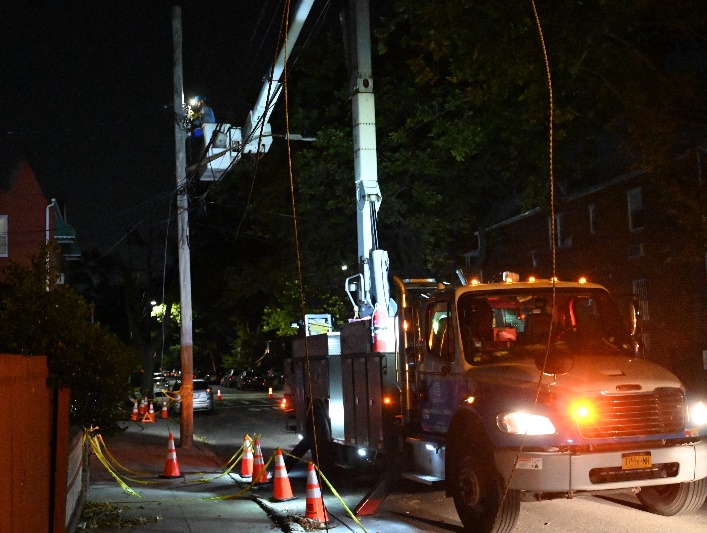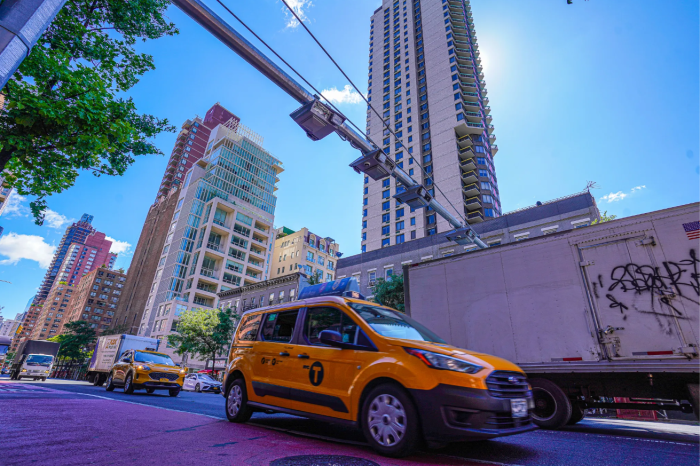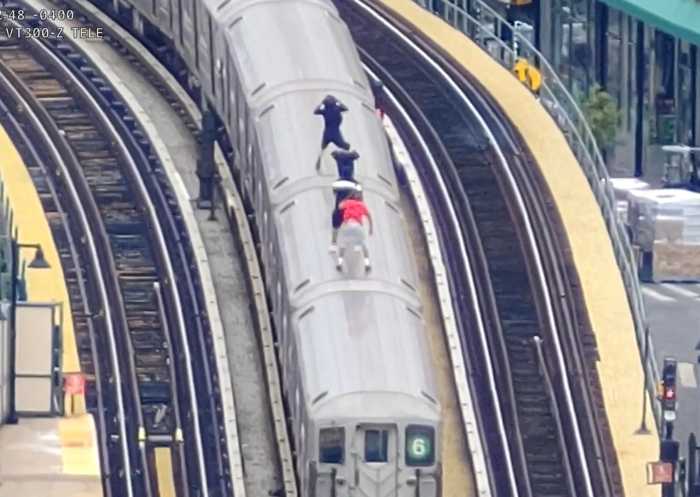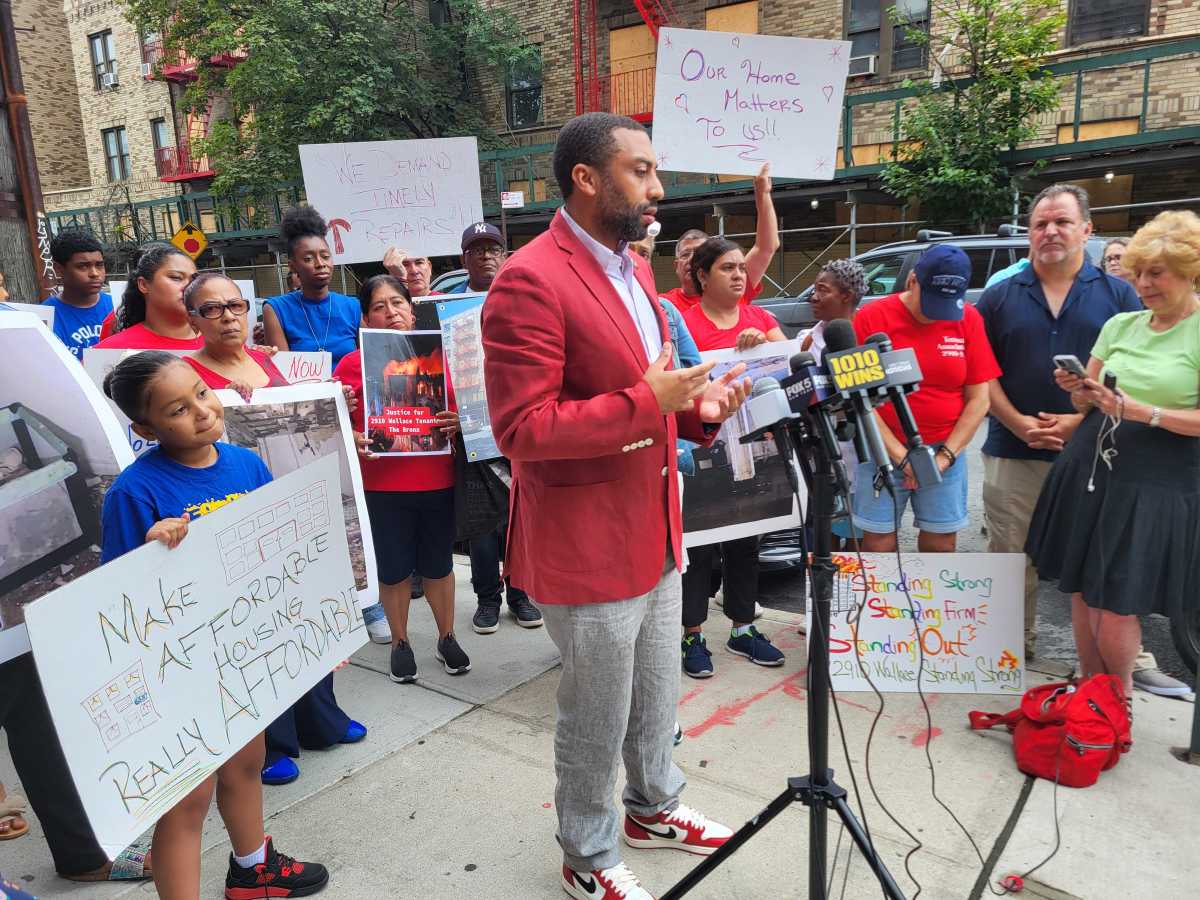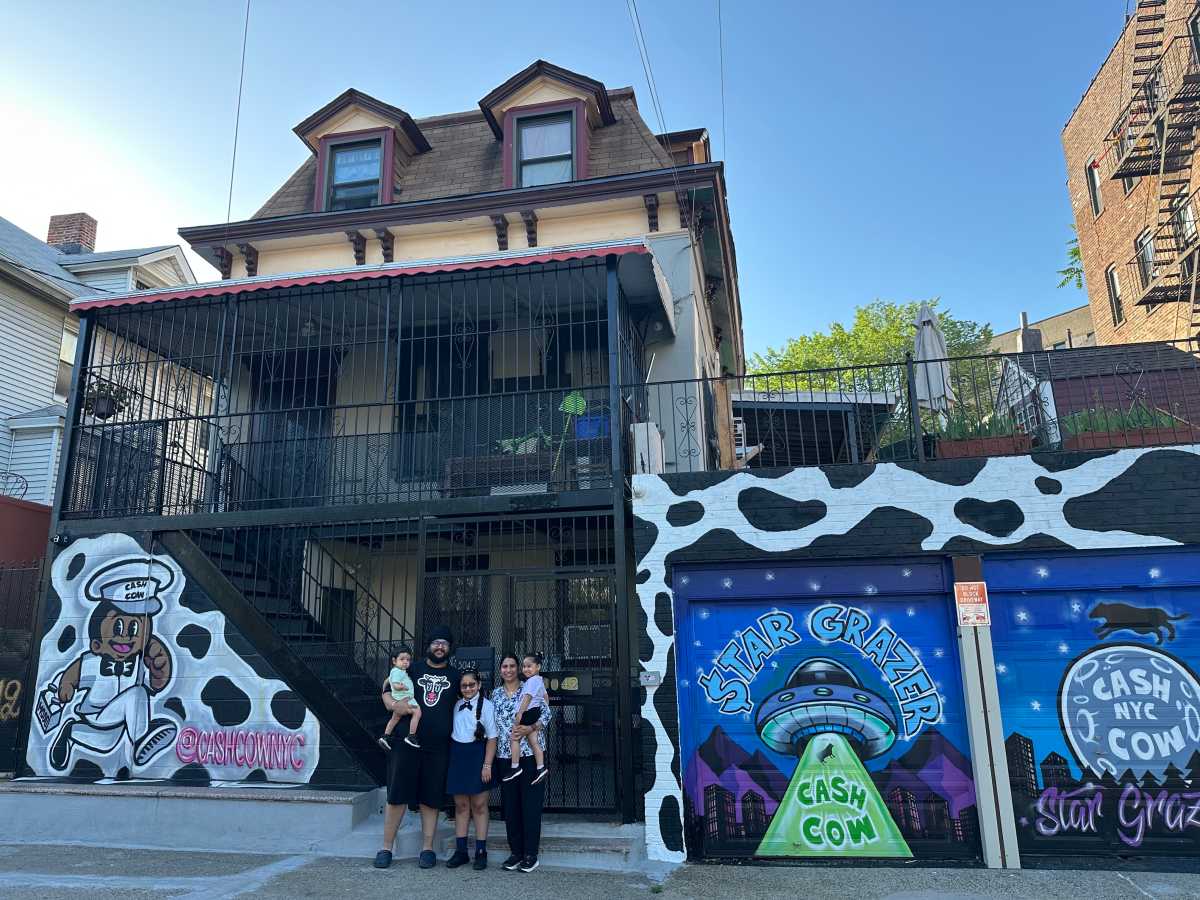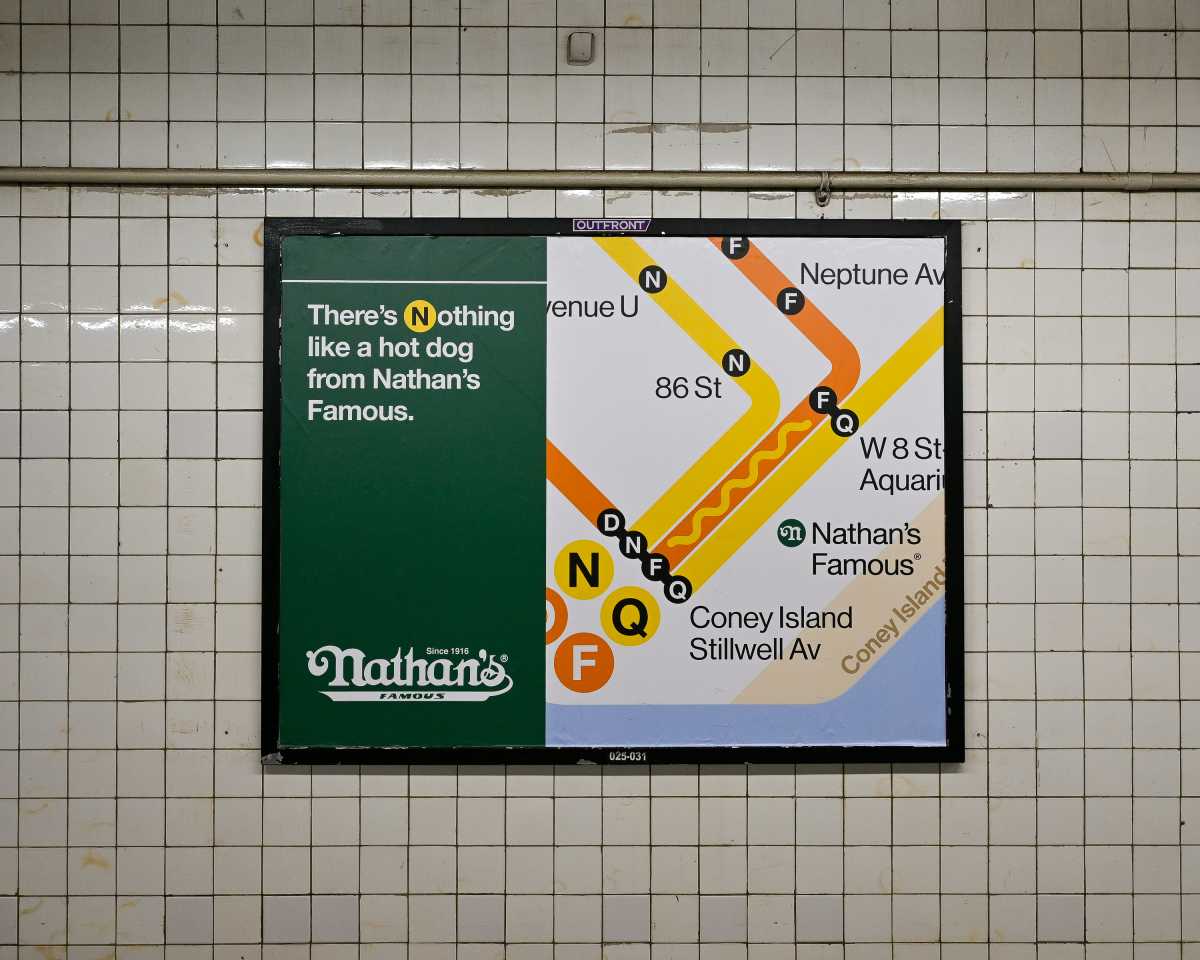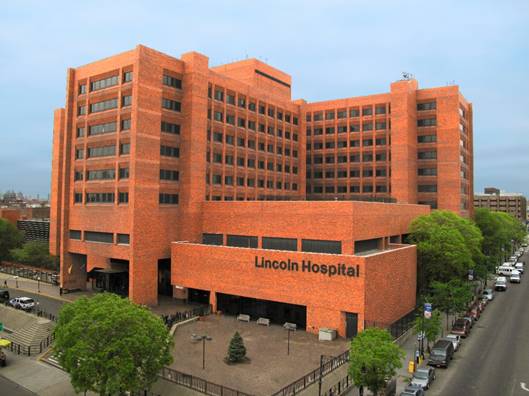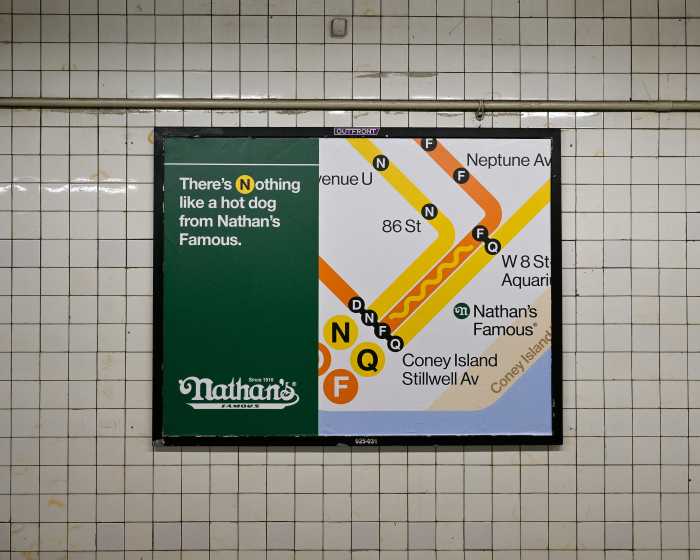Con Edison expects that the last customers still left in the dark from Tropical Storm Isaias last week will have their lights back on by 11 p.m. Sunday night, the utility’s president said on Sunday afternoon.
Tim Cawley told reporters during a Zoom call that hundreds of field crews were still scrambling on Aug. 9 to repair the damage caused by the storm five days ago. Entering Sunday, there were still 10,000 Con Ed customers in New York City without power.
But Cawley expressed optimism that virtually all affected New York City customers would have their power back by Sunday night, with only a handful of sporadic outages in place.
“We recognize the hardship that even a small outage can have on people’s lives, let alone a long one,” Cawley said. “It’s really difficult and frustrating, but we are doing our best and making progress.”
Isaias’ high winds ripped through New York City on Aug. 4, downing thousands of trees and power lines across the five boroughs. Residential communities in Bronx, Brooklyn, Queens, and Staten Island were the hardest hit; at its peak, 270,000 Con Edison customers in the five boroughs had lost power.
More than 3,800 field crews have been working over the past five days to reconnect customers, Cawley said. The company has made wellness check phone calls to 800,000 customers reliant upon power for equipment needed to manage their health.
Additionally, Con Edison has distributed over 15,000 bags of dry ice to affected customers looking to prevent spoilage. The utility is also inviting residents to submit claims on its website for food spoilage reimbursements.
Isaias proved to be the second-most damaging storm event for Con Edison, exceeded only by Superstorm Sandy in 2012. Many of the same areas which lost power due to fallen overhead lines during Sandy were also affected by Isaias last week.
Asked if Con Ed would consider moving lines underground, Cawley said the program is too costly at this point and would require customer inconvenience and expense to complete. He noted that the utility has invested heavily in recent years on technology designed to protect the overhead infrastructure and reduce the extent of power outages, such as various “smart switches” and new kinds of cable.”
“We’re doing a lot to harden our system against the impact of” power outages, Cawley said. “Undergrounding is particularly expensive. You need to bring all of the conductors underground, and each of the homeowners need to adjust their point of entry. People typically receive it through the second floor, but they would need to allow for a trench on their property near the foundation. And that’s a cost the customers would bear.”
Past estimated costs of moving overhead lines underground were about $1 million per mile.



